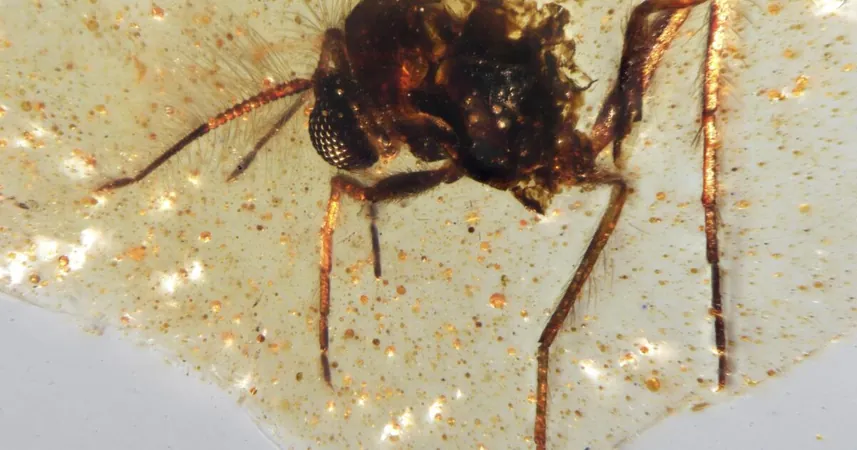
Ancient Insects Encased in Amber Reveal Secrets of the Amazon Rainforest
2025-09-22
Author: Mei
In a groundbreaking discovery, scientists have unveiled ancient insects trapped in amber for the first time in South America, offering an extraordinary glimpse into life on Earth during the era when flowering plants were beginning to flourish.
Found in a sandstone quarry in Ecuador, many of these remarkable specimens date back an impressive 112 million years. Fabiany Herrera, curator of fossil plants at the Field Museum in Chicago, which co-authored the study published in Communications Earth and Environment, explains the significance of this find.
While amber deposits have been widely discovered in the Northern Hemisphere over the past 130 million years, South America remained an enigma, with few finds reported from regions that were once part of the supercontinent Gondwana, according to David Grimaldi, an entomologist with the American Museum of Natural History.
For the first time, beetles, flies, ants, and wasps have been identified in South America’s fossilized tree resin. Ricardo Pérez-de la Fuente, a paleoentomologist at Oxford University Museum of Natural History, highlights the importance of these amber pieces as "little windows into the past." This discovery sheds light on the evolving relationships between flowering plants and insects during the age of dinosaurs.
The researchers uncovered hundreds of amber fragments, some containing ancient insects, pollen, and even tree leaves, from the Genoveva quarry—located at the edge of today’s Amazon basin.
Interestingly, the ancient rainforest vastly differed from the one dinosaurs roamed. Analysis of the amber fossils indicates that it was populated with fern species and conifers, including the rare monkey puzzle tree, species that are not found in today's Amazon. "It was a different kind of forest," Herrera notes.
Previously known to those who worked the mines at the Genoveva quarry, these amber deposits caught the attention of study co-author Carlos Jaramillo from the Smithsonian Tropical Research Institute, who sought out the exact location after hearing about them a decade earlier. "I went there and realized this place is amazing. There’s so much amber in the mines, and it’s more visible in the open quarry than if it were hidden under dense vegetation," Jaramillo continued.
The research team plans to dig deeper into the amber collections to explore Cretaceous-era biodiversity, particularly the insects that helped shape the evolution of flowering plants. Grimaldi explains, "Amber tends to preserve tiny things," while Pérez-de la Fuente adds, "This was the time when the relationship between flowering plants and insects began, marking one of nature's most successful partnerships."




 Brasil (PT)
Brasil (PT)
 Canada (EN)
Canada (EN)
 Chile (ES)
Chile (ES)
 Česko (CS)
Česko (CS)
 대한민국 (KO)
대한민국 (KO)
 España (ES)
España (ES)
 France (FR)
France (FR)
 Hong Kong (EN)
Hong Kong (EN)
 Italia (IT)
Italia (IT)
 日本 (JA)
日本 (JA)
 Magyarország (HU)
Magyarország (HU)
 Norge (NO)
Norge (NO)
 Polska (PL)
Polska (PL)
 Schweiz (DE)
Schweiz (DE)
 Singapore (EN)
Singapore (EN)
 Sverige (SV)
Sverige (SV)
 Suomi (FI)
Suomi (FI)
 Türkiye (TR)
Türkiye (TR)
 الإمارات العربية المتحدة (AR)
الإمارات العربية المتحدة (AR)